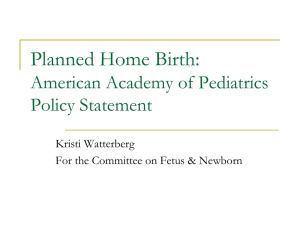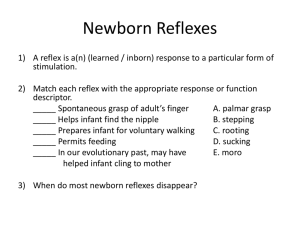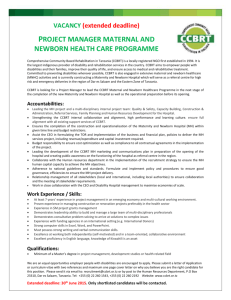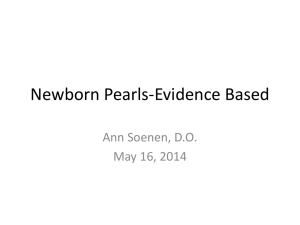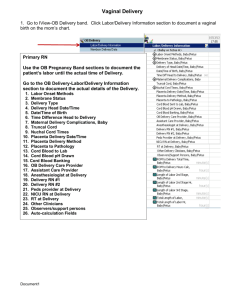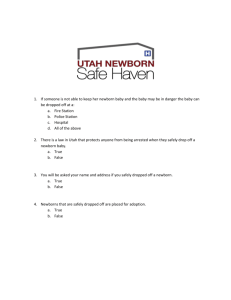Pain Survey In Neonates Hospitalized In Sick Newborn Unit Pattama
advertisement
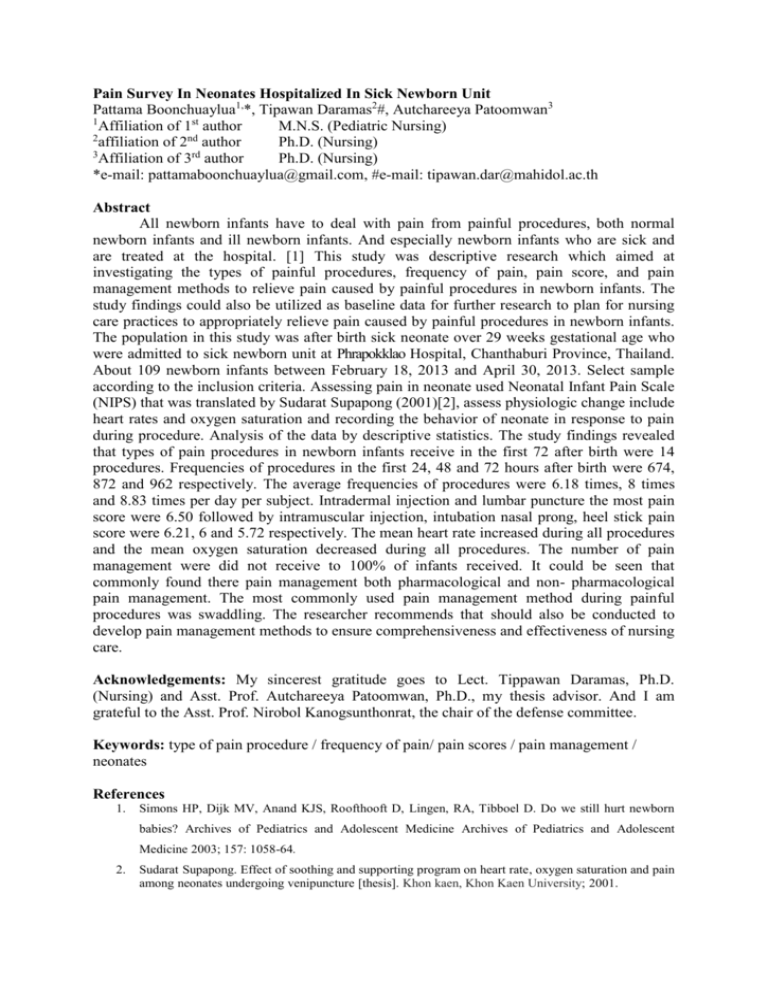
Pain Survey In Neonates Hospitalized In Sick Newborn Unit Pattama Boonchuaylua1,*, Tipawan Daramas2#, Autchareeya Patoomwan3 1 Affiliation of 1st author M.N.S. (Pediatric Nursing) 2 nd affiliation of 2 author Ph.D. (Nursing) 3 Affiliation of 3rd author Ph.D. (Nursing) *e-mail: pattamaboonchuaylua@gmail.com, #e-mail: tipawan.dar@mahidol.ac.th Abstract All newborn infants have to deal with pain from painful procedures, both normal newborn infants and ill newborn infants. And especially newborn infants who are sick and are treated at the hospital. [1] This study was descriptive research which aimed at investigating the types of painful procedures, frequency of pain, pain score, and pain management methods to relieve pain caused by painful procedures in newborn infants. The study findings could also be utilized as baseline data for further research to plan for nursing care practices to appropriately relieve pain caused by painful procedures in newborn infants. The population in this study was after birth sick neonate over 29 weeks gestational age who were admitted to sick newborn unit at Phrapokklao Hospital, Chanthaburi Province, Thailand. About 109 newborn infants between February 18, 2013 and April 30, 2013. Select sample according to the inclusion criteria. Assessing pain in neonate used Neonatal Infant Pain Scale (NIPS) that was translated by Sudarat Supapong (2001)[2], assess physiologic change include heart rates and oxygen saturation and recording the behavior of neonate in response to pain during procedure. Analysis of the data by descriptive statistics. The study findings revealed that types of pain procedures in newborn infants receive in the first 72 after birth were 14 procedures. Frequencies of procedures in the first 24, 48 and 72 hours after birth were 674, 872 and 962 respectively. The average frequencies of procedures were 6.18 times, 8 times and 8.83 times per day per subject. Intradermal injection and lumbar puncture the most pain score were 6.50 followed by intramuscular injection, intubation nasal prong, heel stick pain score were 6.21, 6 and 5.72 respectively. The mean heart rate increased during all procedures and the mean oxygen saturation decreased during all procedures. The number of pain management were did not receive to 100% of infants received. It could be seen that commonly found there pain management both pharmacological and non- pharmacological pain management. The most commonly used pain management method during painful procedures was swaddling. The researcher recommends that should also be conducted to develop pain management methods to ensure comprehensiveness and effectiveness of nursing care. Acknowledgements: My sincerest gratitude goes to Lect. Tippawan Daramas, Ph.D. (Nursing) and Asst. Prof. Autchareeya Patoomwan, Ph.D., my thesis advisor. And I am grateful to the Asst. Prof. Nirobol Kanogsunthonrat, the chair of the defense committee. Keywords: type of pain procedure / frequency of pain/ pain scores / pain management / neonates References 1. Simons HP, Dijk MV, Anand KJS, Roofthooft D, Lingen, RA, Tibboel D. Do we still hurt newborn babies? Archives of Pediatrics and Adolescent Medicine Archives of Pediatrics and Adolescent Medicine 2003; 157: 1058-64. 2. Sudarat Supapong. Effect of soothing and supporting program on heart rate, oxygen saturation and pain among neonates undergoing venipuncture [thesis]. Khon kaen, Khon Kaen University; 2001.


